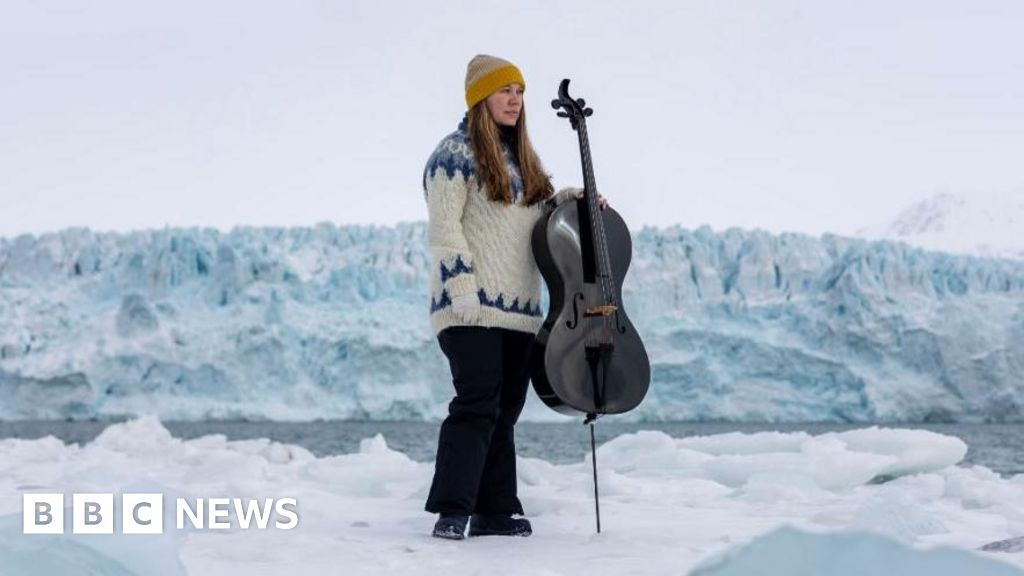Four years ago, a Russian gas tanker, Christophe de Margerie, travelled from eastern China through the Bering Sea before docking at a remote Arctic port in Siberia. For the first time a commercial vessel had crossed the frozen Arctic Ocean in the heart of winter– a feat made possible by human-induced global warming.
Scientists say the Arctic has been warming four times faster than the rest of the planet since 1979. As sea ice retreats, new shipping lanes such as the 9,000-kilometre Northern Sea Route are becoming accessible for longer periods each year.
STORY CONTINUES BELOW THIS AD
The result is a steady rise in maritime traffic through these once impassable waters, according to a report by France24.
Black carbon and the feedback loop
With that rise comes a new environmental threat. More ships in the Arctic mean more fossil fuel emissions, and more pollution means more warming, especially in the form of black carbon.
Black carbon, a byproduct of incomplete combustion from diesel and gas engines, is a potent climate pollutant. It absorbs sunlight, heats the air, and accelerates the melting of ice when deposited on its surface.
“The black colour deposited on the white ice means the ice then absorbs more sunlight, leading to more melting,” said Sammie Buzzard, a polar scientist at Northumbria University’s Centre for Polar Observation and Modelling.
Heavy fuel oil, which produces high levels of black carbon, saw a 75 per cent increase in use in the Arctic from 2015 to 2019. The fuel has been banned in Antarctica since 2011, and a phased ban in the Arctic began in July 2024. Vessels have until 2029 to comply fully.
Rising traffic, rising risks
Shipping activity has surged in the Arctic in the last decade. Fishing boats are the most common vessels, followed by cargo ships and bulk carriers. Between 2013 and 2023, all ship types except oil tankers and research vessels increased in number.
Distance travelled in the Arctic by vessels more than doubled over ten years, jumping by 111 per cent. The safe navigation zone during a 90-day summer window grew by 35 per cent from 1979 to 2018. An estimated 5 per cent of global shipping is expected to shift to Arctic routes.
Most vessels still require icebreaker escorts to cross key routes like the Transpolar Sea Route, the Northwest Passage or the Northern Sea Route. But climate models suggest unescorted navigation may be possible in summer months as early as 2030.
In the Canadian Arctic, vessel numbers have quadrupled since 1990. Yet, melting ice can also bring unexpected hazards. Old ice floes break off and drift south, creating choke points in narrow passages.
STORY CONTINUES BELOW THIS AD
Still, shipping traffic grew 25 per cent between 2013 and 2019, driven by the promise of faster and more efficient trade.
Global consequences of Arctic warming
The Arctic’s transformation has worldwide implications.
“The polar regions act to help cool the rest of the planet through the white ice reflecting energy from the sun back to space,” Buzzard said. “They act a bit like a giant freezer for the rest of the planet.”
As sea ice melts, that reflective ability weakens. “Sea ice regulates heat exchange between the atmosphere and ocean, impacting the global circulation of heat,” said Buzzard. “[So] anything that reduces the amount of ice, or darkens it, can mean less energy is reflected, which means extra warming, which then has consequences for the entire planet.”
The United Nations’ International Maritime Organization has pledged to reduce shipping emissions by at least 20 per cent over the next five years. But environmental groups say progress is too slow.
The Clean Arctic Alliance, a coalition of 21 NGOs, said in a May 14 statement that “in recent years, black carbon emissions from Arctic shipping have more than doubled.” The group is urging governments to take stronger action against pollutants like black carbon and methane.
STORY CONTINUES BELOW THIS AD
The cost to wildlife and fragile ecosystems
Buzzard said Arctic shipping could offer some carbon savings if it shortens trade routes, but without strict regulation the damage may outweigh the benefits.
“Sea ice not only acts to help cool the planet, it is a habitat for creatures like polar bears that use the ice for hunting.” Over 96 per cent of the polar bear’s critical habitat depends on sea ice for hunting and movement.
Noise pollution from increased traffic is another growing threat. Whales and other marine mammals rely on sound to communicate and migrate. Studies show underwater noise has doubled in some Arctic areas in just six years.
Other consequences include air pollution, waste discharge, oil spill risks, and sulfur runoff from exhaust-cleaning scrubbers.







 English (US) ·
English (US) ·